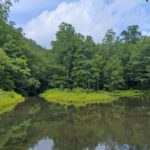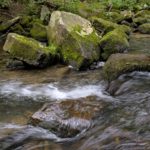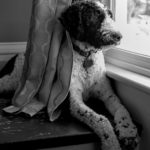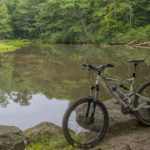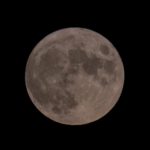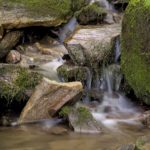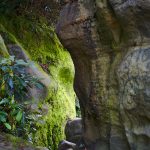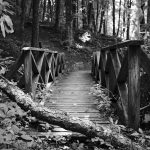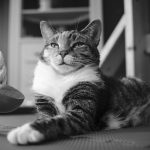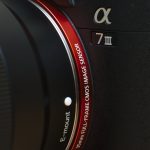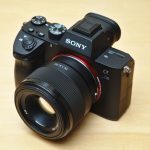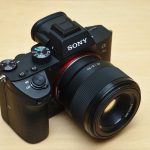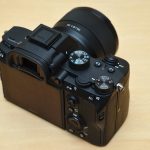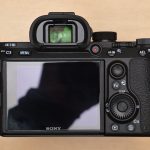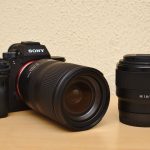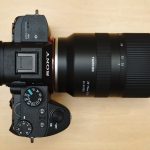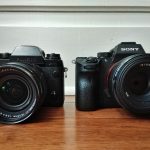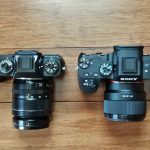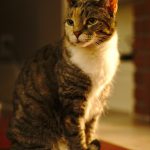Tag Archives: Cat
Hiking With a Single Lens
Normally when I go out to combine my hobbies of hiking and photography, I load up a backpack full of gear, a tripod a Clif bar, a water bottle and head off somewhere. In that bag is my usual landscape kit consisting of a Sony A7iii with multiple lenses such as a 15mm and 50mm primes, 28-75mm f/2.8, and even a big 100-400mm just in case I see some wildlife. Add to this bag batteries, remote shutter, cleaning supplies, various ND filters and all of the other random stuff and that bag gets rather heavy. Not this time however.
After a day in the office, I stopped on the commute home at Laurel Mountain State Park and then Linn Run State Park. These are great places for hiking, mountain biking and even swimming in the creeks. Knowing I was coming from my day job, I brought along only a single camera and lens on a strap. No bag, no tripod, no filters and no accessories. I brought along a Sony a7iii with an attached 7Artisans 35mm f/2 manual lens in a Leica M mount adapted with a Haoge LM-NEX close focus adapter. Simple.
Having only a single focal length was great. It really helped me compose my images with care, made the process of shooting a joy and my back was happy not to be lugging around all that gear.
The Siren call of Full Frame
You don’t need a full frame sensor. Full frame just makes the camera’s more expensive and the lenses bigger. APS-C is the best compromise. These are the things that ran through my head as I was hitting the “Place Order” button on a brand new Sony A7iii camera and Sony 50mm f/1.8 prime lens. The rational part of my brain was drowned out by images of crazy bokeh, status and the glorious size of the 35mm full frame digital sensor. As I placed the order, I kept thinking of the times that I scoffed at the Sony cameras, the company in general and the fanboi’s who fawned over them. I was a Fuji shooter, I had a taste for the classic controls, the beautiful bodies and the petite ‘Fujicrons’.
So what happened you ask? I started shooting more video, more low light stuff and was a bit let down by the path Fuji was taking. After starting to get more serious into video shooting, my X-Pro2 was making things a bit more difficult. Those classic controls I love so much for photography make video shooting a bit more difficult than necessary. Complete lack of IBIS in any model except the X-H1 was a bother. Battery life was always a concern. No real 3rd party lens support was a bit concerning. The reasons started to pile up. Soon enough, I was engrossed in YouTube review video’s of the Sony A7iii and comparisons. After a month or so of researching, I decided to take the plunge. I was in the Fuji ecosystem for over 5 years, so it was time for a change. I only lasted for 2 years in the micro 4/3 system, so 5 was an eternity!
The change concluded with me selling all of my Fuji X gear (except my X-T1 and 18-55mm for backup) for a Sony A7iii, Sony 50mm f/1.8 and a Tamron 28-75mm f/2.8. That Tamron is a killer lens at just over a pound in weight but a bright f/2.8 aperture throughout the zoom range.
So how does this new full frame wonder compare size wise to my beloved Fuji cameras and lenses? Let’s have a look at a few cellphone pictures since both cameras I own are in the pictures.
The above is my X-T1 with the Fuji 18-55mm mounted next to the new Sony A7iii with 50mm f/1.8. The cameras are essentially the same size, albeit one has a full frame 35mm sensor. The lenses are different yes, but if I had bought the kit Sony lens, a 28-70mm f/3.5-5.6, then those sizes would have been very comparable as well. Bottom line is that these are very similar in size and that is quite an amazing feat.
What are some other pros for the Sony? The Sony has twice the battery life as the Fuji cameras, even the brand new X-T3, X-T30 or X-H1. The Sony has IBIS, which is amazing. I remember having this on my Olympus OMD E-M5 (when I used a micro 4/3 system back from 2012 to 2013) and thinking back then how amazing that was. Moving to Fuji, I resigned myself to rely on lenses with built in IS and for photography, I was generally fine with this. Once I started doing some more video however, that changed quickly. In a test shot, I had the Tamron 28-75mm zoomed to 75mm and was taking shots at 1/10 of a second handheld that were very sharp with no signs of camera shake. The autofocus of the Sony is a level ahead of the Fuji system as well. In single AF-S mode, both camera’s are about equal I’d say, but when it comes to continuous tracking and face detection, the Sony just leaps ahead. Face and eye detect on the Sony is something to behold.
The bad things for the Sony is the menu system. I won’t go into detail since it’s been covered for years, but you better read the manual a few times, watch some youtube videos and then customize the buttons and quick menu so you never have to jump back into it. Now that I have the camera set up to my liking, it’s actually a joy to use. The other negatives are due to physics. Yes, the Sony has some nice compact glass to use like the Sony Zeiss 35mm f/2.8 or even smaller Rokinon 35mm f/2.8, but most of the lenses are bigger since it’s a full frame camera. As long as you expect that, it’s not a big issue.
Long story short, as much as I loved my Fuji X gear, I found it was time to move on to something with a bit more performance that will make my shooting easier. I haven’t had the chance to get out and take tons of test shots, but I will be soon. In the meantime, here are some typical cat pictures until it stops raining outside.

